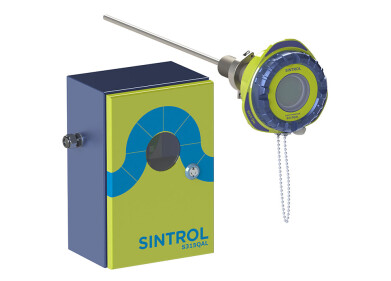Air monitoring
On-road and road-side NOX-measurement with nCLD 66 and nCLD AL2, assets for urban structure redesigning
Apr 08 2020
One of the most severe threats for human health in an urban living environment is the air pollution, caused by vehicle emissions. Around the world, local authorities are trying to integrate this impact into their future infrastructural planning and urban design plotting.
Infrastructural action plans quickly involve the increase of eco-friendly public transport, avoiding private vehicles in highly populated areas and reorganising pathways for potential bus or tram lines. But one thing that must also be taken into consideration, are the emissions that are caused by the public transports themselves. In the current technological situation, busses relying on diesel fuel combustion engines are still dominating. As well do also entire transportation fleets, where a longer range is a more important factor than the emission control. Also, compared to new engine technologies, renewable energy sources are still to costly. In order to set up a future-orientated political directive, which could adjust future developments and market supports in favor of these new assets, reliable scientific data for proof is essential. And still, investigations and research programs in this direction are still rarely to be found. The reason for this is caused by the difficulty, how to implement a high quality, cost-efficient, on-board vehicle emission detection system. Besides a compact, vehicle-integrated design, the equipment needs to fast-responsive, power-saving and with a high resolution at the same time.
Therefore the city of Hong Kong has implemented the plume chasing method, where a NO, NO2 and NOX detection system is integrated into a measurement vehicle, which following up traffic routes or specific vehicle types to picture the air contamination. The unfiltered diesel exhaust was recently categorised as carcinogenic by the World Health Organisation. Therefore Hong Kong is focusing the research, besides particulate matter, CO and CO2, also on NOX and NO2. This study may give birth to a potential new, more stricter diesel emission standard. More details on the project can found under: C.F. Lau et al. / Atmospheric Environment 122 (2015) 171e182.
The mapping of the vehicle emissions and its composition will deliver a true and real-time estimation of pedestrian exposure inside the related areas. Besides the adaptations of vehicle presence, fleet composition or public transport system, the structural design of the habitation also plays a major role. For instance, will an urban street canyon also enforce a concentration increase of hazardous emissions, while an urban sprawl, for instance by solitary buildings, green areas, street reconfiguration and splinter developments will assist in emission dispersion. Both, on-road and road-side measurement set-ups, were established, covering time frames for characteristic traffic volume. The goal is to provide enough information to establish an effective, combined strategy, including urban design, bus-rerouting and transport reorgansation, in order to keep the impact of traffic emissions on urban air quality and public health as little as possible. Further information on this study can be taken from: A. Rakowska et al. / Atmospheric Environment 98 (2014) 260e270.
Digital Edition
AET Guide 2025
March 2025
Buyer's Guide Directory - Product Listings by Category - Suppliers Listings (A-Z) Air Monitoring - Stack Emissions Multi-Gas Analysis: OFCEAS<sup>®</sup> Technology Seduces the Market...
View all digital editions
Events
Mar 18 2025 Expo Santa Fe, Mexico
Mar 18 2025 Moscow, Russia
Mar 19 2025 Manila, Philippines
Mar 19 2025 New Delhi, India
Mar 20 2025 Guangzhou, China


















.jpg)





